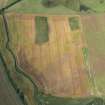Pricing Change
New pricing for orders of material from this site will come into place shortly. Charges for supply of digital images, digitisation on demand, prints and licensing will be altered.
Upcoming Maintenance
Please be advised that this website will undergo scheduled maintenance on the following dates:
Thursday, 9 January: 11:00 AM - 3:00 PM
Thursday, 23 January: 11:00 AM - 3:00 PM
Thursday, 30 January: 11:00 AM - 3:00 PM
During these times, some functionality such as image purchasing may be temporarily unavailable. We apologise for any inconvenience this may cause.
Leuchars
Rig And Furrow (Medieval) - (Post Medieval), Ring Ditch(S) (Period Unassigned), Unenclosed Settlement (Period Unassigned)
Site Name Leuchars
Classification Rig And Furrow (Medieval) - (Post Medieval), Ring Ditch(S) (Period Unassigned), Unenclosed Settlement (Period Unassigned)
Alternative Name(s) Southfield
Canmore ID 33303
Site Number NO42SW 8
NGR NO 44430 21490
NGR Description Centred NO 44430 21490
Datum OSGB36 - NGR
Permalink http://canmore.org.uk/site/33303
First 100 images shown. See the Collections panel (below) for a link to all digital images.
- Council Fife
- Parish Leuchars
- Former Region Fife
- Former District North East Fife
- Former County Fife
NO42SW 8 centred 44430 21490
A large native settlement was found near Leuchars from air reconnaissance by Dr St Joseph. The site consisted of compounds, ring ditches, pits and working floors, with no sign of surrounding fortification.
J K St Joseph 1951.
Trial excavations were carried out at the site at Easter 1953 by Stevenson and members of St Andrews University staff. "The site covers parts of the two fields S of the War Memorial, as well as the two W of them, on the broad top of a low hill. The subsoil is sand with some fine gravel, and at humus level there is no trace of the ancient remains." Three of the circular ditches discovered from the air were identified on the ground. "A trench across two circles showed that one was a ditch 3' - 4' wide, 2' deep, and surrounded an area 16' across, within which there was thick occupation soil and rough paving, surrounded by irregularly placed upright posts to carry a roof: three of the stone-packed holes were found up to 6' apart. There may have been a thin, and no doubt low, wall of soil or sods on the inner edge of the ditch and a slight outer paling or fence 6' away. The second circle, 34' from the first, was a similar ditch, but disclosed no post holes or other signs of use.
Neither ring was fully excavated, but on the air photograph they appear unbroken by any causeway. A third ditch was proved to be continuous, 4' wide and 3 1/2' deep; the enclosed area was only 10' across, all clean sand. This ditch may have been deliberately filled in with sand again; cobbling and occupation soil were found on top of the subsided filling. One stray Early Iron Age sherd may be a pointer to the date of the second phase.
R B K Stevenson 1953
At the time of investigation the NE and SW fields concerned were under pasture while the NW and SE fields had been ploughed. No finds were made nor was any feature found that could be identified with the crop marks on APs (DG 47-50 and 52-4).
The farmer at Milton, on whose land the site occurs, said that the excavations were made in the NW corner of the SE field, i.e. at NO 4456 2154, but nothing has been done since.
Visited by OS (RDL) 5 June 1964.
Noted by St Joseph as rare example of an undefended settlement. '.. some 20 small hut-circles appear, together with pits, and lines of narrow ditch, of which the clearest define three sides of a square, the fourth being open'.
J K St Joseph 1967.
No change. Fields under crop.
Visited by OS (DWR) 21 May 1974
Photographed by the RCAHMS in 1976 and 1978.
This cropmark complex, situated on a southerly facing slop at an altitude of between 10 and 20m OD, has been recorded on oblique aerial photography (RCAHMSAP 2001). Rig (centred NO 4486 2166) runs in a N-S direction with an interval between furrows of approximately 5m. There is also a scatter of circular anomalies at NO 4480 2135 that each have a diameter of between 3m and 6m. A linear feature runs in a SE-NW direction from NO 4499 2157 to NO 4483 2175, and possibly represents a former field boundary as shown in the 1st edition of the OS 6-inch map.
Information from RCAHMS (VLW), 16 May 2006.
Aerial Photographic Transcription (31 December 1989 - 7 February 1997)
An aerial transcription was produced from oblique aerial photographs. Information from Historic Environment Scotland (BM) 31 March 2017.














































































































































































































